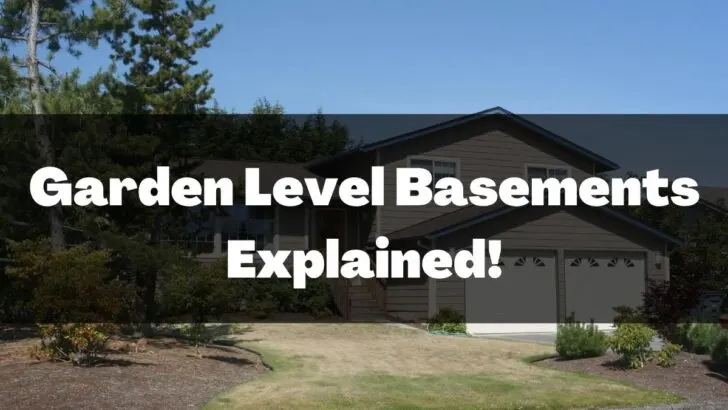Are you building a house but have no clue about basements? Basements may be hidden from the exterior of any house, but in most cases, they’re the most crucial part of any construction.
Functional basements are an even more beneficial addition to the house because not only do they provide you with extra space, but they also are a great way of tucking away unaesthetic activities like laundry or storage out of the eye. One type of basement you can utilize is a garden-level basement.
Garden-level basements are half under the ground and half above. To put it simply, if you’re standing inside a garden-level basement, you’d have a full view of the street outside from 2-3 feet off the ground. Garden-level basements have a lot of natural light that come into them as well.
Here’s all that you need to know about garden-level basements:
What Is a Garden-Level Basement?
Consider investing in a garden-level basement if the conventional basements look too shabby and dark for your taste. As mentioned earlier, this basement type is half under the ground and half above.
This means that there’s a lot of light coming into your basement, which is a factor uninvolved in other types of basements where you largely have to rely on artificial lighting and zero to no natural ventilation.
Garden-level basements became a go-to for new constructions after World War II when the need for more housing was growing by the day.
Also, it’s natural to be worried about theft and break-ins if a considerable part of your house is exposed, especially on the ground level. However, garden-level basements are made to be the safest basement kind out there because of their extensive use of bars and locks.
In most cases where garden-level basements are equipped with a series of windows, the constructors ensure that top-quality locks are used to prevent break-ins.
However, just to be on the safe side, consider choosing minimal outdoor decor so that your house doesn’t look extra appealing to thieves and crooks.
Aside from all the general pros and cons of a garden-level basement, the one thing which most users find annoying is the access to rodents and insects.
Since the windows and other openings of a garden-level basement are extremely close to the ground, crickets and other insects find their way inside easily. This can be prevented by using extensive methods of proofing, screening, and netting.
If you’re planning to purchase a home with a garden-level basement, make sure to check whether it has these preventive barriers in check.
Garden Level vs. Walkout Basement
Garden-level basements are often compared with walkout basements. Here are both the basement types briefly explained:
Walkout Basement:
As the name suggests, a walkout basement allows you to walk out or into the basement from the ground level. At least one of the basement’s walls is fully above the ground, allowing you to build a door for easy access.

Right after the door opens, there are stairs leading you to the lowest level of the basement. Walkout basements can be a part of the original house’s plan or be built later.
Like every basement, walkout basements also have their fair share of pros and cons. For starters, there’s a drastic level of degradation for walkout basements.
This simply means that to have a walkout basement, corner A of your property needs to be high enough to house the higher side of your basement. On the other hand, corner B needs to be dug deep enough to align comfortably with the average human’s height.
Ideally, this works best in homes that are built on natural slopes. Houses situated on flat grounds prove difficult to build a Walkout basement.
Walkout basements are also very hard to construct if they aren't already a part of the house when it is built.
Be it a workout space, an office, a study room, or even a music studio, walkout basements can host any activity because of their separate access from the exterior.
Garden-Level Basement:
Garden-level basements, on the other hand, are equally above the ground as they’re under. Standing in a garden-level basement, most of our heads would be visible from the exterior.
Garden-level basements were a breakthrough from the conventional way of building basements, where the space has considerably dingy energy and resembles a dungeon.
The windows and openings in a garden-level basement bring in plenty of natural light, making it an ideal choice for all kinds of functions apart from just storage.
Garden-level basements are also preferred because of the aesthetic quality they bring to the house. Think of it this way: you’re standing in a sheltered space and have a full view of the scenery or even the rain/snow falling outside at eye-level.
If you want to use your basement as an office or studio space, garden-level basements are a perfect option. For the times you need privacy, you can just cover your basement’s windows with curtains or blindfolds to restrict passersby from having a peek into your space.
Final Words on Garden-Level Basements
Garden-level basements can help add natural light to your basement and give you a nice view of the outdoors, all while functioning like a normal basement.
If you intend to use your basement as a functional space, don’t forget to read up on all kinds of basements. We hope you have a clear idea of garden-level basements from this guide!


